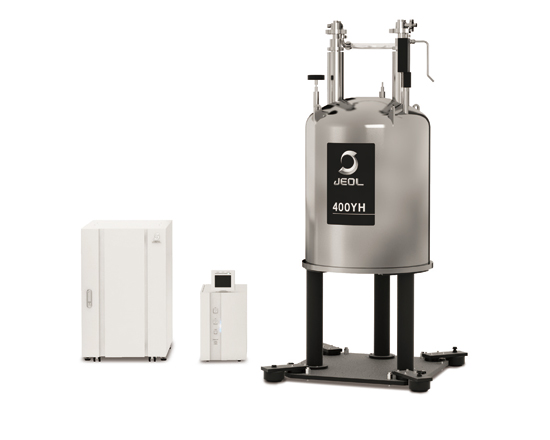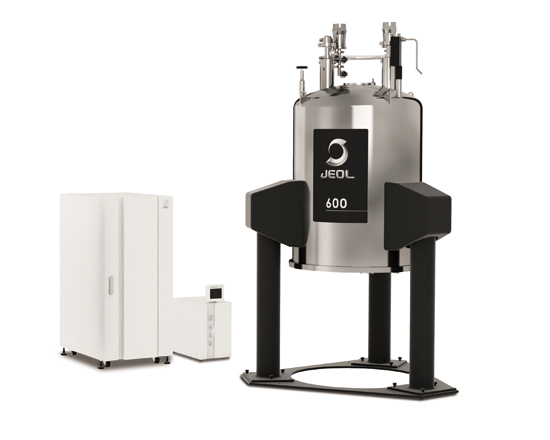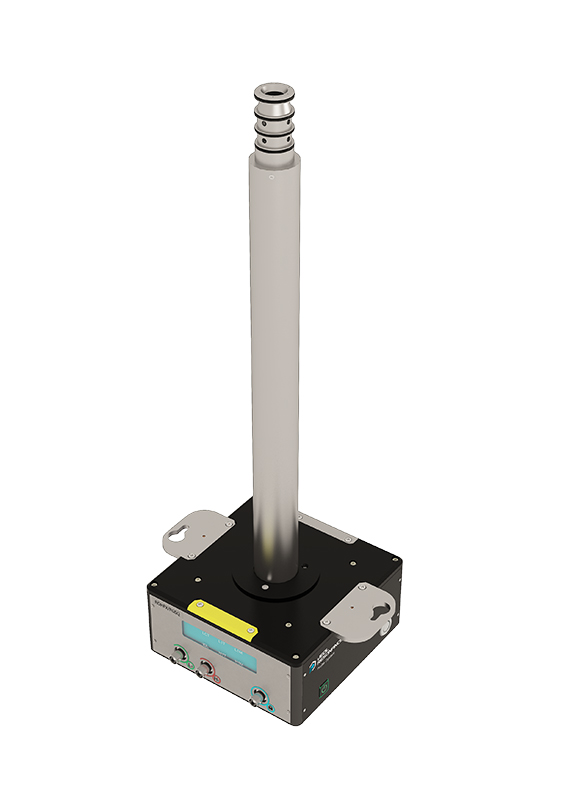

What Can We Help You Achieve? |
 JNM-ECZL S NMR SpectrometerNext generation 2-channel NMR spectrometerECZL S series is a streamlined model dedicated to 400 MHz solutions-state NMR while incorporating the high performance digital high frequency technology of the ECZL series. |
|
|
 JNM-ECZL G NMR SpectrometerECZL G series is a flagship model for cutting-edge NMR methods. The footprint of the spectrometer has been reduced to less than 60% of ECZR, while maintaining the expandability needed to support a wide range of applications. It is flexible in terms of expansion, with support for three or more channels, high-power amplifiers, and high-output magnetic field gradients, allowing for future functional expansion even when installed in the minimum configuration. It is an adaptable FT-NMR system that can respond to changes in user applications and the introduction of the latest applications. This series is regularly offered at 500 MHz, 600 MHz, 700 MHz, and 800 MHz. Even higher field instruments are available, please inquire. Latest Digital and High Frequency Technology
|
 ROYALPROBE™ HFXThe ROYALPROBE™ HFX is the world's first liquid NMR probe with the capability to switch between single tune and dual tune modes on the high frequency coil.Operating in single tune mode, the ROYALPROBE™ HFX has the same high performance for sensitivity and pulse widths as the current standard JEOL NMR ROYALPROBE. Operating the HFX probe in dual tune mode allows for a wide variety of advanced 1H and 19F NMR experiments including 1H{19F}, 19F{1H}, X{1H,19F}, and many unique X{1H, 19F} correlation experiments to simplify spectral assignments of modern complex fluorine containing compounds for the pharmaceutical and polymer industries. These advance H,F,X, experiments can be run on a routine 2-channel ECZ spectrometer. The Low Frequency coil can be tuned to any nucleus between 31P and 15N.
|
|
|
 Ultrahigh Sensitivity Autotune Probes using Cryogenic Probe TechnologySuperCOOL Cryogenic ProbeThe SuperCOOL probe features significantly improved sensitivity at double the sensitivity of conventional probes and thermal noise is reduced by cooling of both the detection coil and preamplifier. The SuperCOOL probe reduces measurement times to just 1/4 to enable many more samples to be measured in a single day. The SuperCOOL probe accepts a 5mm diameter tube, has a wide temperature range from -40°C to +150°C , and also is suitable for polymeric samples of high viscosity. Major Features
UltraCOOL Cryogenic ProbeThe UltraCOOL probe achieves more than 4 times the sensitivity of conventional probes while thermal noise is reduced by cooling of both the detection coil and preamplifier. Measurement times using the UltraCOOL probe are only 1/16 that of a conventional probe. What used to be an overnight measurement can now be achieved in a lunch break! The UltraCOOL probe also accepts a 5mm diameter tube, has a wide temperature range from -40°C to +150°C , and is suitable for polymeric samples of high viscosity. Comparison of Room Temperature 600MHz to a 500MHz with a SuperCOOL Probe:
Note: Both data sets were collected under the same conditions for 1024 scans using a 30° pulse at a repetition rate of 2.8s. The large off-scale peaks are from acetone. |